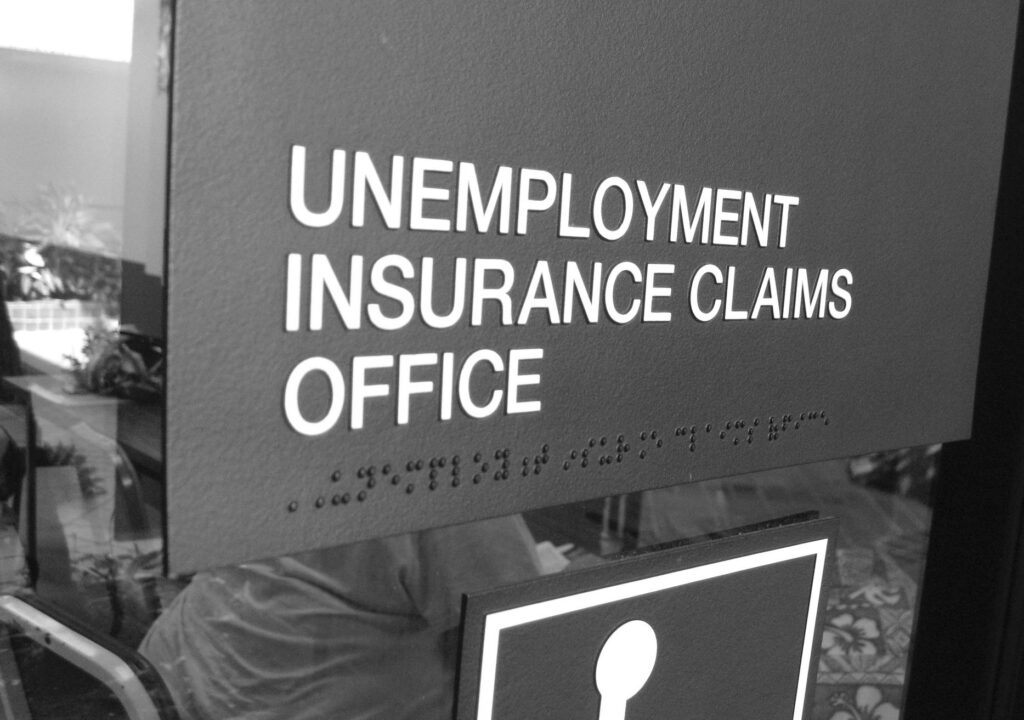We are in the midst of a devastating global health crisis without modern precedent. The emergency is at once medical and economic. The combination of social distancing, lockdowns, and quarantines we must use to fight the COVID-19 pandemic has already crashed markets, constricted supply and demand, closed countless businesses, and sent millions of workers home; it will no doubt lead to a steep decline in economic activity.
Without swift and appropriate action, this economic fallout will create great pains for workers and families and lead to a significant number of business failures, which in turn will drive down aggregate demand—with effects stretching considerably beyond the end of social distancing. We must act now to alleviate that pain and preserve relationships between workers and employers. A key tool for attacking these problems so is to plug the hole in family and business balance sheets, helping to keep them afloat and maintain a floor on demand.
We should immediately expand the unemployment insurance system to provide relief to families and businesses.
The good news is that we have policy levers that can help. The governments of Denmark, Belgium, France, Germany, New Zealand, and the United Kingdom, among others, have already announced plans to protect family and business balance sheets. But one size does not fit all; we cannot look to those models for mere imitation. A successful policy in the United States should build on our own institutions and the design of programs already in place. A good approach would be to adapt the unemployment insurance (UI) system to provide relief to families and businesses.
UI currently provides limited and partial assistance to some jobseekers facing unemployment, with strings that encourage recipients to seek work. To combat the economic fallout of the coronavirus pandemic, we should temporarily expand the system to provide funding that can help preserve jobs through job sharing and provide nearly full compensation for workers who face reduced hours or layoffs—with the goal of making most of these layoffs temporary (a sort of furlough), allowing workers to stay formally employed. All of this needs to be paid for by the federal government. Instead of financing UI using a payroll tax, we should retool it into a fully federally financed vehicle that provides income for workers while they remain at home and protects companies from going bankrupt.
This scheme is not the only way to support families and businesses, of course. A smart proposal by the Berkeley economists Emanuel Saez and Gabriel Zucman would also compensate businesses for demand loss. Similarly, Glen Hubbard and Michael Strain of the American Enterprise Institute propose a loan to small- and medium-sized businesses that would convert to a grant if employers do not lay off workers. My case for using the UI system is that it is already up and running: all the ingredients—including work sharing—are already in place. We just need to change the parameters substantially, and—like we did during the Great Recession—fund it using federal dollars. Changing the parameters means making UI generous enough to support workers at a time when they cannot be expected to find a job (we do not want them working!), and expanding on the work sharing component to keep workers on the payroll.
This is by no means a comprehensive economic plan to deal with the pandemic. We also need to shore up paid sick and family leave, strengthen safety net programs, transfer funds to state and local governments, provide low-cost bridge loans to small- and medium-sized businesses, and provide additional stimulus measure to boost aggregate demand when the social-distancing period ends. However, helping workers and businesses directly harmed by the pandemic and the necessary public health response is the most important place to start.
• • •
Protecting Families and Businesses
The first step is to make UI much more comprehensive by substantially reducing eligibility requirements. The most important to ditch are one-week waiting periods and the imperative to search actively for a job. We also need to reduce the past earnings requirement, which effectively excludes many low-wage workers with lower hours. And unlike the current system, the crisis response should also allow self-employed workers, including those in the gig economy, to apply. Altogether, only around a quarter of unemployed workers in the United States receive UI. Our goal should be to move this much closer to 100 percent.
An expanded unemployment system should greatly reduce eligibility requirements, increase replacement rates for wages, and extend the maximum benefit duration to at least a year.
Step two is to make UI much more generous so that payments come closer to replacing the incomes of people out of work or facing reduced hours. We can do that by increasing the system’s replacement rates—the share of your normal income that you receive as UI benefits, which typically range between 33 and 55 percent. Benefits are further reduced by maximum benefit caps that vary considerably across states. Consider an example. If the replacement rate is 50 percent, the maximum weekly benefit is $500, and you usually earn $1500, you will actually receive only a third of your usual earnings, below the replacement rate. We should instead implement a replacement rate of at least 75 percent and raise the cap on weekly benefits to $1,500.
The typical objection to a high replacement rate is that it discourages job seeking; people take advantage of the generous benefits, the argument goes, instead of looking harder. This may be a reasonable concern at other times, but it certainly is not now: we don’t expect many of those laid off to be able to find jobs in this environment. Indeed, we do not want people at work now at all, and we hope that people will be called back to the jobs they already had once the pandemic subsides—not that they will go looking for other jobs. Providing a generous replacement rate is thus a reasonable strategy to get money in the hands of people very badly hurt by the crisis. In this redeployed UI system, the problem is not to help the unemployed while they look for a job, but to fill the holes in their budgets during this temporary pandemic.
Step three is to make UI more durable by extending the maximum benefit duration. Workers are typically eligible for twenty-six weeks of UI. At the peak of the Great Recession, by contrast, eligibility was extended to for as many as ninety-nine weeks. We may hope that the COVID-19 downturn won’t last as long as the Great Recession, but in any case, those who were unemployed even prior to the shock cannot be expected to find a job very easily. At a minimum an immediate expansion to fifty-two weeks seems called for.
• • •
Protecting Jobs
These changes would issue financial support to people not at work because of the pandemic. But we also want workers to find it easy to return to their jobs. Workers and employers build relationships, and we should work to preserve those relationships, as much as possible. We should thus look for ways to incentivize temporary layoffs (or furloughs), which would keep workers on payroll and allow for easy return. Such an arrangement—employers retaining workers, while the federal government pays (much of) their wages—would also allow employees to access some of their benefits. Such furloughs might not be available to all workers, but making this option easily available and attractive (via a much higher replacement rate) will help both workers and businesses.
Only around a quarter of unemployed workers in the United States receive unemployment benefits. Our goal should be to move this much closer to 100 percent.
Work sharing provides another way for employers to keep workers on payroll—letting employers reduce hours (thus also helping to meet social distancing requirements) rather than cut jobs entirely. This may be particularly attractive to businesses where workers can work remotely, but there just isn’t enough work to keep all workers on the payroll full time. In essence, the government would be protecting public health by paying workers to stay home more, stepping in to pick up the tab. The work sharing provisions within the current UI system can easily be adapted for this purpose. And there is good evidence it works. Work sharing worked well in other countries, especially Germany during the last recession. Little wonder that Germany has announced plans to use work sharing again to deal with the COVID-19 crisis.
Currently twenty-seven states have work sharing provisions. The federal government should require all states to offer it, and with a much higher wage replacement rate for lost hours than most states now provide—ideally around 90 to 95 percent, even higher than the replacement rate for layoffs. Why is this important? For one thing, because it secures workers’ paychecks, of course. But it would also help employers avoid cutting pay for workers they do plan to retain, lessening the risk of reduced morale and the likelihood of workers voluntarily leaving due to pay cuts. Setting a higher replacement rate for work sharing over layoff benefits would also provide an incentive to employers to use work sharing over temporary layoffs. And last, keeping workers economically engaged and on the payroll is a good thing in itself—assuming it meets economic and health objectives (e.g., remote work)—because it can help facilitate the recovery after social distancing ends by preventing depreciation of firm-specific skills.
Some employers may not participate in work sharing and may cut workers’ hours. To protect workers against income loss, and help them stick around at their jobs, we can boost partial UI benefits. As UI is currently structured, a worker whose hours are cut by 50 percent would receive little or no benefits in most cases. But we can easily modify this to ensure that those workers seeing reduction in hours can keep much of their earnings intact.
• • •
Federal funding
Our current UI system is funded using employer payroll taxes. It also uses an “experience rating,” which imposes higher payroll taxes on firms that have higher rates of UI usage in the past. However, in times of economic crises, the federal government usually steps in.
Because times are so unusual, the federal government should re-start the Emergency Unemployment Compensation (EUC) system, which it used during the Great Recession to fund the dramatic increase in maximum benefit duration. In particular, all additional UI expenditures should be borne by the federal government, and businesses accessing these emergency UI provisions must not be penalized through increased experience rating.
To be clear, this is not the only piece of fiscal policy we need to enact. But since unemployment insurance is already up and running, expanding it is an obvious way to go.
The size of this program will depend critically on the size of the downturn and the exact parameters we choose—replacement rates, benefit caps, and so on. Assuming an average replacement rate of 85 percent, and a maximum weekly benefit cap of $1500, I estimate that the average UI-eligible earnings of workers would be around $910, and that their weekly benefit amount would be around $773. To put this in perspective, the current average weekly UI benefit is around $350, so this would likely more than double the take home pay for those on UI. What would this UI expansion cost? Consider a hypothetical scenario where the unemployment rate is sharply elevated to around 20 percent for around six months and assume that with more comprehensive coverage, 75 percent of the unemployed receive benefits. The combination of comprehensiveness and generosity will mean that expenses grow by roughly $365 billion.
Of course, there are many unknowns about the depth and duration of this downturn. But the key point is that if the size of the hole is bigger than we thought, we should want to spend more to plug it. And UI spending is extremely well targeted for both protecting people and for shoring up aggregate demand.
• • •
What’s not here?
To be clear, this is not the only piece of fiscal policy we need to enact. We will need additional provisions to help employers—like the no-interest loans proposed by Adam Ozimek and John Lettieri of the Economic Innovation Group, or subsidies for rent and other non-labor costs—especially in hard-hit sectors. We will need to strengthen the safety net for low income families, especially through the Supplemental Nutrition Assistance Program (SNAP). The federal government will also need to help support state and local governments’ finances to avoid reduction in spending and employment that can prolong the downturn.
And finally, we need to plan for a big consumption increase to help supercharge a recovery once social distancing is no longer necessary. As the figure below suggests, we want to move from social insurance to stimulus over time. But even now, there is also scope for general stimulus policies (like the idea, currently being debated in Congress, of sending a check for several thousand dollars to each family). This will set us up for a faster recovery once we are in that phase.

But before we get there, we must deal with the balance sheets of households and businesses who are most severely hit by the current crisis. An expanded and more robust unemployment insurance system is an obvious way to go.
Addendum, April 2, 2020
Since the publication of my essay, Congress passed the Coronavirus Aid, Relief and Economic Security (CARES) Act, which has now been signed into law. Most—though not all—of the proposals I talked about have been incorporated in some form into the legislation. There will be time to address more of these issues now that the first major bill is complete, but this is an important step. Below I compare elements of my original proposal to what was signed into law.
There were five key aspects to my proposal.
- Ease eligibility requirements, so the vast majority of unemployed (not just a quarter, as is the case currently) can collect unemployment benefits. To do this, I recommended getting rid of the requirement that beneficiaries continue to seek work (since virtually no work is available), weakening the previous earnings test, and making previously ineligible groups, such as self-employed people, eligible for benefits. The CARES Act does much of this, via two separate vehicles. First, the Pandemic Emergency Unemployment Compensation (PEUC) gets rid of the waiting period and job search requirements for regular UI recipients. Additionally, the Pandemic Unemployment Assistance (PUA) provides new benefits to those who have lost jobs but don’t qualify for UI (such as those who are self-employed).
- Significantly increase the rate at which wages are replaced by benefits, to at least 85 percent. Similar to my proposal, the legislation enacted by Congress substantially increases benefits, though it does so somewhat differently. To make the program as simple as possible (and, apparently, due to administrative hurdles in reprogramming benefit replacement rates in some states), the new law will provide most beneficiaries with a flat weekly benefit increase of $600. Overall, for UI-eligible workers receiving the PEUC, this will raise benefits even more than in my proposal, which would have raised benefits by a little under $500. The flat increase also means a particularly high increase in benefits for low-wage earners, many of whom may see their UI benefits exceeding their paychecks. In contrast, higher-wage earners would fare better with an increase geared to their previous wage. However, I should note that for workers not traditionally eligible for UI (such as the self-employed), the benefit amounts provided by the PUA are somewhat lower, at half the state average benefit plus $600.
- Raise the maximum benefit duration to well over the standard twenty-six weeks. Consistent with this recommendation, the CARES Act increases the maximum benefit duration to thirty-nine weeks for now.
- Maintain the existing matches between workers and employers, including through incentivizing work sharing. The CARES Act does provide incentives to states to adopt and use short-time compensation (STC). However, more needs to be done here especially to prevent perverse incentives of employers to lay off workers or cut hours instead of using work sharing.
- Fund it federally. Under the CARES Act the federal government will pay for the additional benefits created under the program. This is good, but the federal government will need to provide additional, substantial assistance to states to pay for regular UI given the state of the state UI funds.









